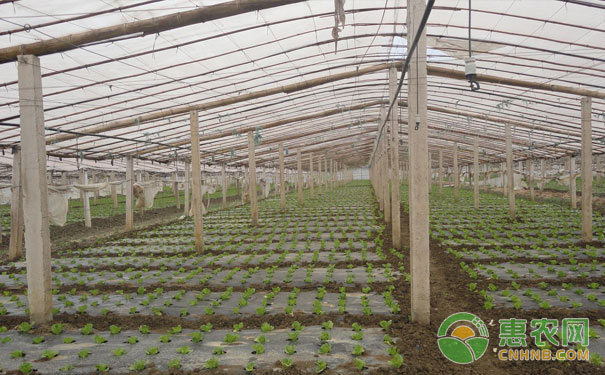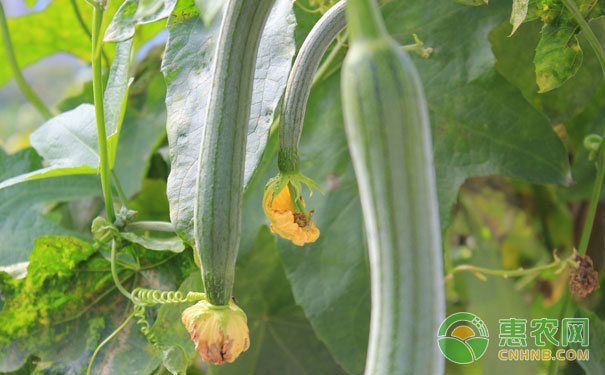The farmer said: "A cold autumn rains." After the summer holiday, the temperature gradually declines, and the sunshine is sufficient but the rainfall is gradually reduced, which is conducive to the growth of vegetables and other crops. At this time, it is the key period for the cultivation, planting and management of greenhouse vegetables. It is also an important period for the management of vegetables in the open field, and it is also necessary to strengthen the prevention and control of pests and diseases.

First, autumn and winter, greenhouse vegetable colonization
Autumn and winter 茬 solar greenhouse tomato, eggplant and pepper and other warm crops should be planted in the late August to early September, greenhouses with good insulation performance can be wintered, but the planting time should be slightly delayed.
1. Planting vegetables in the greenhouse should be fastened in advance.
The EVA functional membrane is used for droplet elimination, and the PO membrane is used conditionally. The greenhouse of the tomato and eggplant is preferably replaced with a new membrane. The greenhouse for planting eggplant should not use the polyvinyl chloride membrane, otherwise it will affect the coloration of the eggplant. The bottom edge of the lower agricultural film is sealed with an insect-proof net, and the lower edge does not need to be buried in the soil to release the wind.
2. Do a good job of disinfecting the shed and the soil.
The shed can be sterilized by sulfur fumigation. The dosage of 3 kg per mu or 4 g of sulfur per cubic meter, 8 g of sawdust is added. After ignition, it is sealed for 24 hours and then ventilated and exhausted; 45% chlorothalonil can also be used. The agent is 200-250 grams per acre or 30% of the quick-acting smoke agent 300-500 grams. After ignition, it is sealed for 2 to 3 hours and then released.
3. Apply organic fertilizer as base fertilizer.
It is recommended to apply 5,000 kilograms of fully decomposed and finely divided high-quality organic fertilizer per acre. If unfertilized organic fertilizer is used, not only can the nutrients be supplied to the crops, but also the roots will affect the growth of the crops, and underground pests such as cockroaches will occur. Organic fertilizer must be fully decomposed before application. If the amount of organic fertilizer is insufficient, bio-organic fertilizer or commercial organic fertilizer can be applied, and the dosage is 3,000 kg per mu.
4. Fine land preparation.
It is necessary to start fertilizing the cultivated land 10 to 15 days in advance, so that it can be ploughed and leveled without clear and dark; the sorghum or sorghum sorghum should be 15-20 cm above the ground, and the ridge high ridge is more suitable for the shed without drip irrigation facilities. Dig a V-shaped watering ditch in the middle of the raft to facilitate the use of watering under the membrane in the winter. Plants that need to be planted in late August should be planted first, and then covered with mulch after slow seedling cultivation, and planting after the beginning of September should be covered with mulch and then planted.
5. Pay attention to the quality of colonization.
The selection of strong and uniform seedlings with uniform growth requires appropriate depth and reasonable density. Generally, there are about 3000 varieties of common tomato varieties per mu and 2200 varieties of cherry tomatoes. Each plant should also be planted with 2 to 4 plants for seedlings.
Second, the greenhouse management of greenhouses during the summer season

The tomato, cucumber and other crops planted in the greenhouse in autumn are in the flowering stage; the crops such as summer loofah, bitter gourd, pepper, eggplant and so on are also in the flowering stage, when the weather gradually cools, which is conducive to flowering pollination and fruit enlargement. Particular attention should be paid to strengthening field management and promoting the planting of fruits with high commodity rates. Management measures:
The first is to adjust the appropriate temperature, light and humidity;
The second is to pruning in time and smashing the vines;
The third is to promote fruit setting. Tomato can adopt bumblebee-assisted pollination or shock pollinator to assist pollination, thereby increasing the fruit setting rate of tomato; eggplant should not be fruit-bearing when the temperature of the greenhouse is too high, and the safest "Fat Yield No.2" spray can be selected. Flower or silk flower;
The fourth is scientific watering and topdressing, controlling water and fertilizer in the vegetative growth period, promoting the root growth of the plants, and controlling the growth of the above-ground parts of the stems and leaves. Wait until the first ear fruit grows to about 3 cm and then water the top dressing. When the cucumber young melon begins to stretch, it should be watered and topdressed;
Fifth, we must strengthen the prevention and control of pests and diseases, especially to prevent the occurrence of tomato yellow leaf curl virus. The door and the tuyere are sealed with a 50-mesh insect net to control the damage of the whitefly.
Third, autumn and autumn open vegetable management

The cauliflower, cabbage, lettuce and other crops planted in the autumn are in the rosette stage. At this time, it is the stage of the long outer leaves.
The first is to plough the loose soil and the "saplings" to promote the growth of the roots of the crops and avoid excessive growth of the leaves. If it is rained for 3 to 5 days after cultivating, it will continue to cultivate in order to facilitate root growth. The "small seedlings" period is generally around 15 days;
The second is to water and topdress. At the end of the "small seedlings", watering and topdressing will be started, and about 30 kilograms of ternary compound fertilizer will be applied to each acre.
Third, timely control of pests and diseases such as aphids and cabbage moths. High-efficiency, low-level, low-residue pesticides such as biological pesticides such as Bacillus thuringiensis can be selected, which can be effective at night.
Introduction:
The bulb of garlic,an allium plant in the lily family.with the pungent flavor and spicy taste.spherical shape with a diameter of 3-6.5cm. The surface is covered with white and papery-skin.
The top is slightly pointed, with residual scape in the middle,many fibrous root marks at the base. After peeling off the skin, a single head or 6 to 16 petal-shaped small bulbs, inserted around the base of the remaining flower stems. The bulbous valve is slightly ovoid, with a membranous outer skin, slightly pointed at the apex, and an arcuate bulge on one side.
In order to ensure the maximum freshness and nutrients.
We adhere to the traditional natural drying method without any human intervention.
Our fresh red garlic contains thiamine, riboflavin, nicotinic acid, allicin, citral, selenium and germanium.etc
Therefore help to improve immunity,anti-aging,lower blood sugar and pressure,improve indigestion etc.
what'more,it`s the easy way to improve flavor,add unique aroma for your food.
Specification
Brand:Changrong
Variety:Liliaceous Vegetables
Color:Purple red
Fresh Red Garlic,Chesnok Red Garlic,Red Chinese Garlic,Natural Fresh Red Garlic
shandong changrong international trade co.,ltd. , https://www.cragriculture.com
